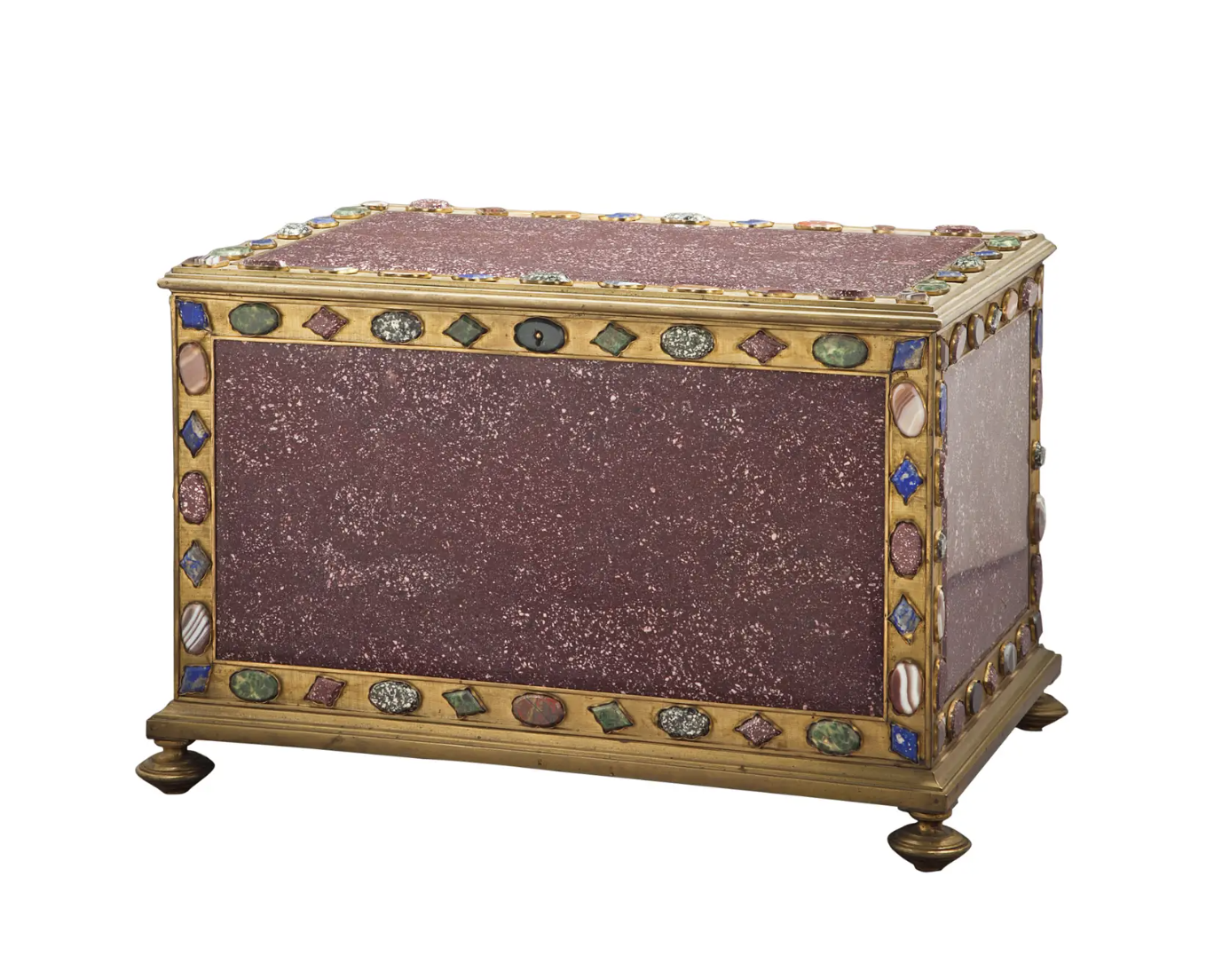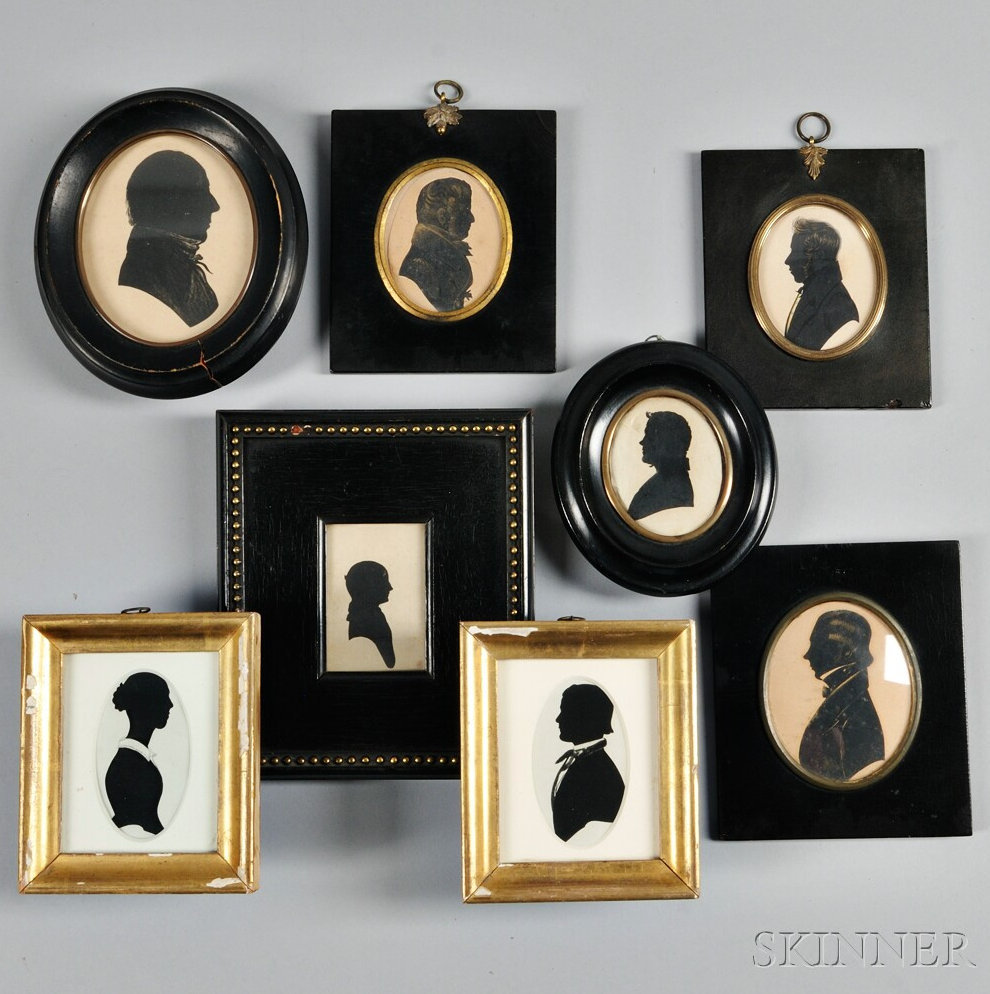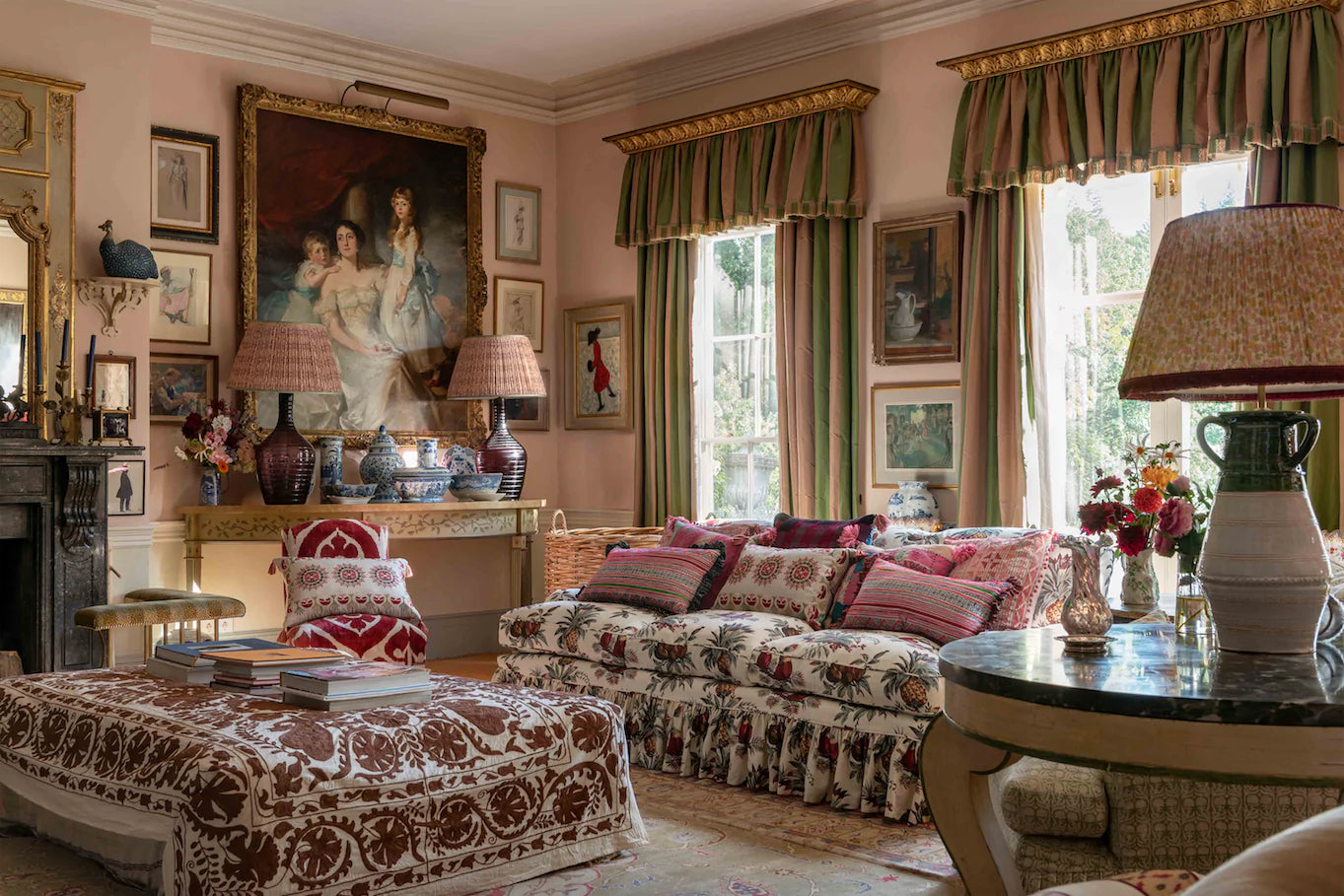New to the shop this week are striking Porphyry Lampshades we had made from a wallpaper pattern designed by Miles Redd exclusively for Schumacher. In keeping with the theme, I thought it might be worth researching what exactly porphyry is - and taking a closer look at the origins behind the term and how it is used in design today. I hope you enjoy this quick read - and please browse the new designs on our website - or better yet come and visit us in person.
The following information was borrowed from wikipedia, selectstone.com, dictionary.com with images from 1stdibs.com and krbnyc.com

What is porphyry and how does one pronounce it?
Porphyry, prouncned (por-fa-ree), according to dictionary.com, is
1. a very hard rock, anciently quarried in Egypt, having a dark, purplish-red groundmass containing small crystals of feldspar.

Grand Tour Specimen Marble and Porphyry Panel or Pietra Dura Picture, via 1stDibs
Ok, but what is porphyry?
Porphyry is an igneous rock similar in composition to granite. Unlike common granites, pophyry has large, light-colored crystals of quartz or feldspar typically floating in a red or purple fine-grained matrix of smaller crystals. The term porphyry is from the Ancient Greek πορφύρα (porphyra), meaning "purple". Purple was the color of royalty, and the "imperial porphyry" was a deep purple. Some authors claimed the rock was the hardest known in antiquity. Thus, "imperial"-grade porphyry was prized for monuments and building projects in Imperial Rome and thereafter. Porphyry is can occur in other colors - such as the green specimen below.

Pair of Grand Tour Green Porphyry Specimens, via 1stDibs
Where does it come from?
All the porphyry columns in Rome, the red porphyry togas on busts of emporors, the porphyry panels in the revetment of the Pantheon, as well as the altars and vases and fountain basins reused in the Renaissance and dispersed as far as Kyiv, all came from the one quarry at Mons Porphyrites ("Porphyry Mountain"), which seems to have been worked intermittently between 29 and 335 AD.

A Small Stacking Tray by Miles Redd for The Lacquer Company, via KRB NYC
Lampshades made from the wallpaper by Miles Redd for The Lacquer Company, via Newport Lamp & Shade Company

Wallpaper by Miles Redd for Schumacher, via Schumacher
How is it used in design today?
In addition to the wallpaper Miles Redd designed for Schumacher, porphyry as a design element can also be seen in his furntiure & accessories collection for The Lacquer Company. Further, Bunny Williams Home has a piece in their furntiure collection featuring the intriguging design.





Leave a comment
This site is protected by hCaptcha and the hCaptcha Privacy Policy and Terms of Service apply.